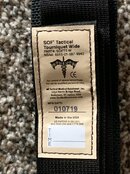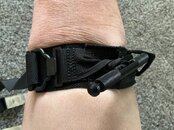HBVetera n2312
Contributor
I see that you aren't interested in a serious discussion where your arguments are based in more than your own bragging, but rather being snarky and condescending.
If that's what floats your boat, have at it. I'm out of here.
Storker,
I am not bragging. I have simply provided a background of my experience, which is not unique. Many folks on here have just as much if not more experience.
The only comment I had a problem with is using pressure bandages on arterial bleeding on the extremities. I'm not trying to be snarky or condescending, but rather passionate about giving back knowledge of subjects I hold close. My arguments I have presented here are not mine, but rather the United States Department of Defense. I'm merely the messenger. And this messenger has experience with the message, that's all.
I am not trying to make personal judgements or call names, but I will call out BS for what it is. You have clarified that you were trained this way. I am merely pointing out the deficiency in your training, not in you personally. If you want to make it a personal thing, I can do that too, but I prefer to be more helpful than not. A lot of stuff "floats my boat" but Internet haggling definitely is not one of them. I have been quietly reading this board for years.
So let's have a serious discussion. I'm down for that.
If that's what floats your boat, have at it. I'm out of here.
Storker,
I am not bragging. I have simply provided a background of my experience, which is not unique. Many folks on here have just as much if not more experience.
The only comment I had a problem with is using pressure bandages on arterial bleeding on the extremities. I'm not trying to be snarky or condescending, but rather passionate about giving back knowledge of subjects I hold close. My arguments I have presented here are not mine, but rather the United States Department of Defense. I'm merely the messenger. And this messenger has experience with the message, that's all.
I am not trying to make personal judgements or call names, but I will call out BS for what it is. You have clarified that you were trained this way. I am merely pointing out the deficiency in your training, not in you personally. If you want to make it a personal thing, I can do that too, but I prefer to be more helpful than not. A lot of stuff "floats my boat" but Internet haggling definitely is not one of them. I have been quietly reading this board for years.
So let's have a serious discussion. I'm down for that.





